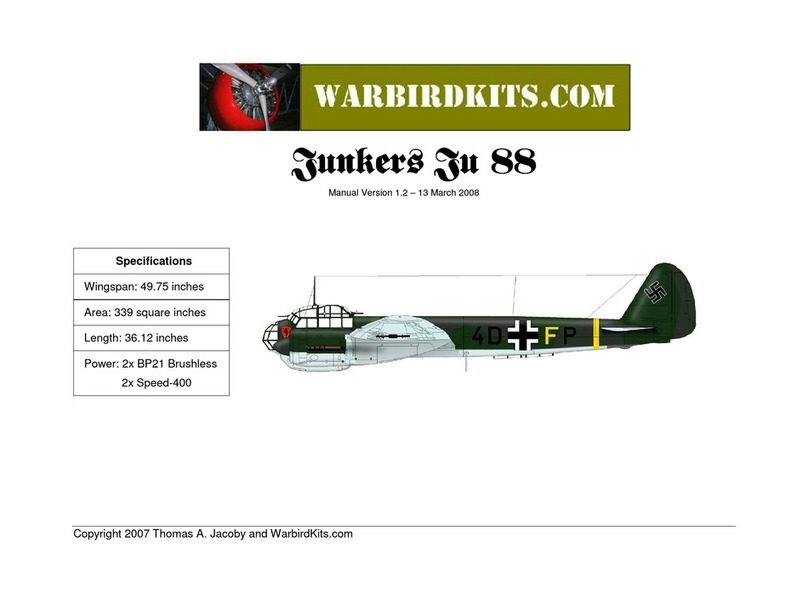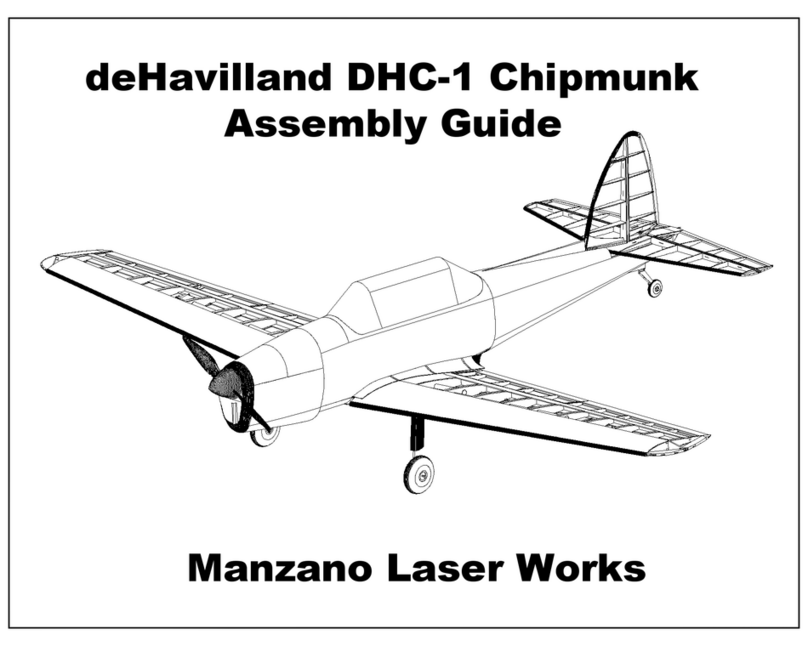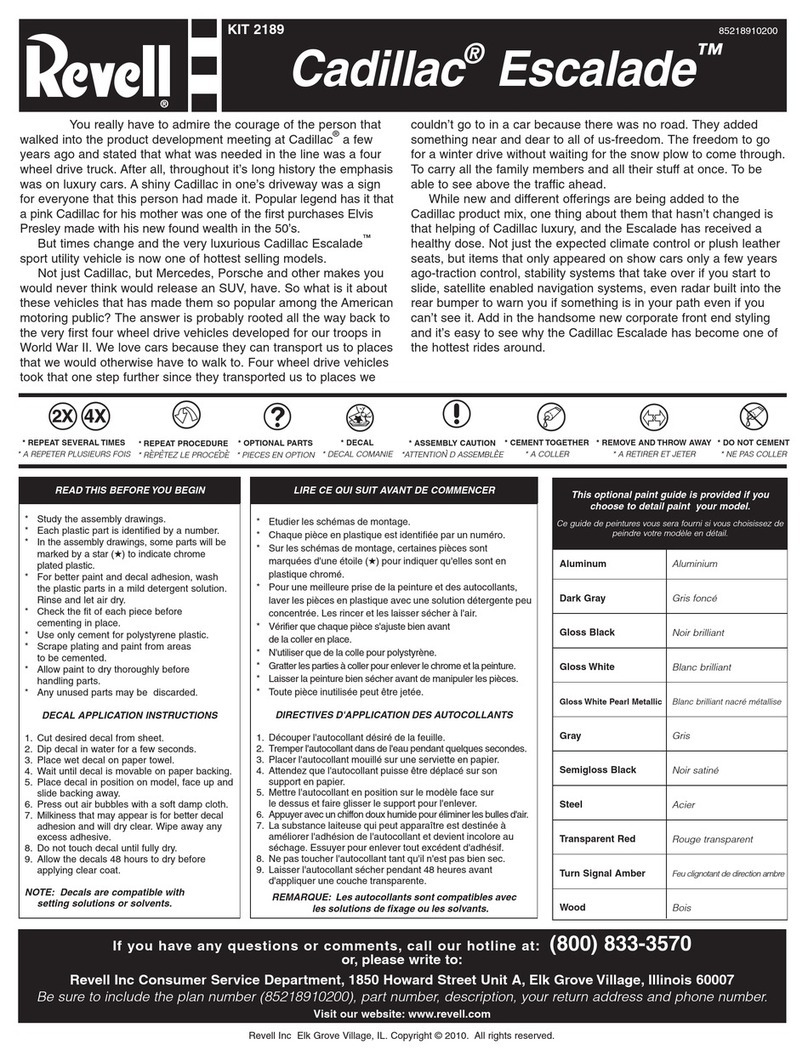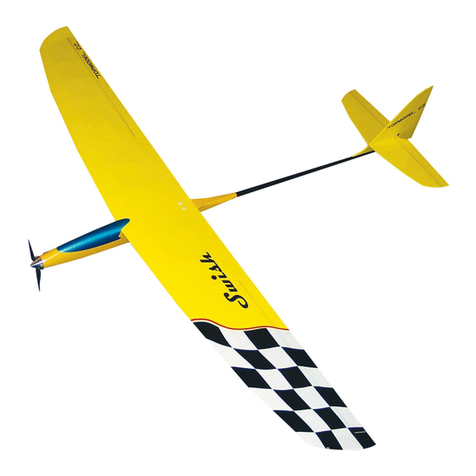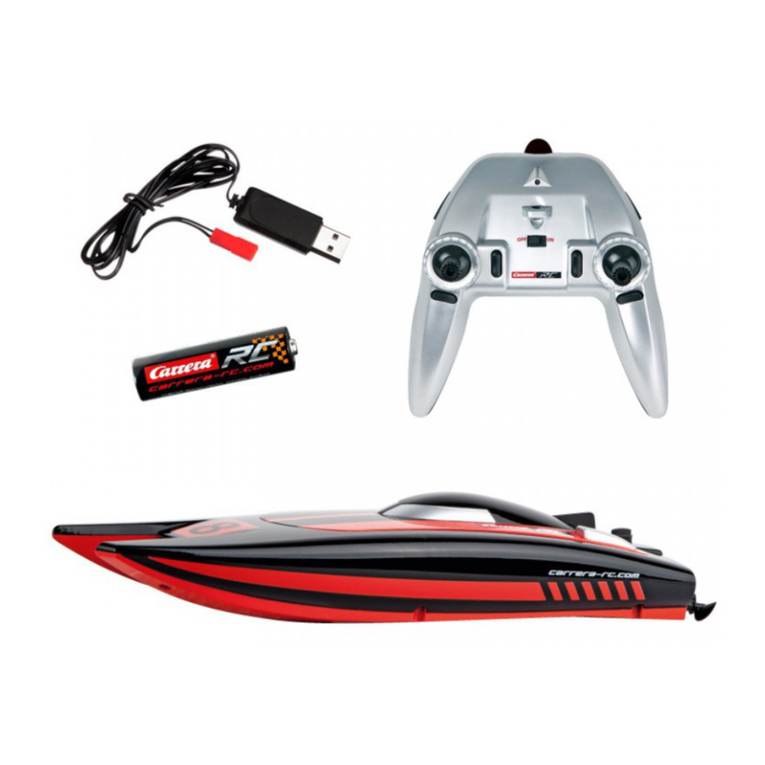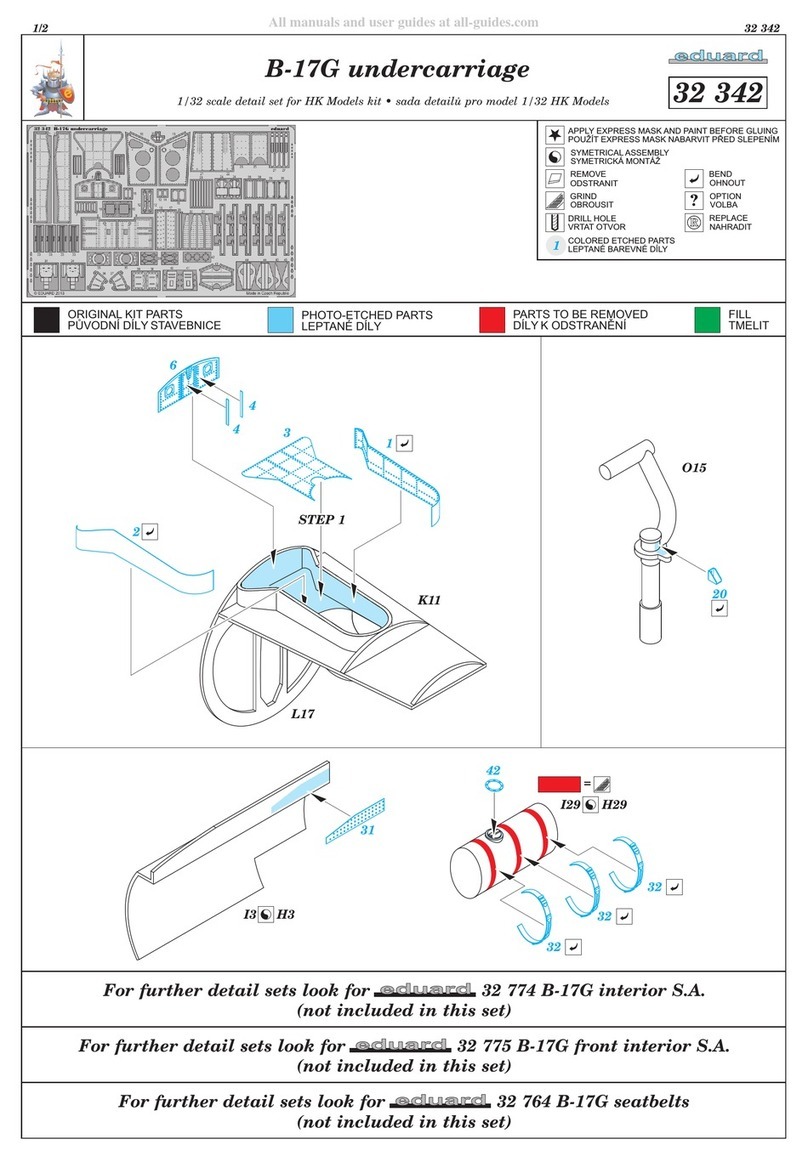Manzano Laser Works V1 Buzz Bomb Instructions for use

V1 Buzz Bomb Construction Manual
V1 Buzz Bomb
1/9 Sport Scale
Introduction
In the late stages of World War II, the Germans invented a new and terrible weapon, the
V1 flying bomb. Though not nearly as accurate as today’s cruise missiles, it could hit a target
such as a city from several hundred ilometers away.
They were a 4,000 lb, 350 to 400 MPH pilot-less drone, catapulted from a ramp set in the
direction of the city that they were aimed at, stabilized by gyroscopes during flight. It was
powered by a simple pulse jet that shot flame out the bac , and made a very loud low frequency
buzzing sound. This led to the bombs being called “buzz-bombs” by the intended victims. A
simple wind-milling propeller mechanism on the front measured the distance of flight, and ic ed
in down elevator when the pre-set number of propeller turns had been reached. The engine then
cut out, and the bomb glided down to impact, in relative silence. The people on the ground
quic ly learned to ta e cover when the engines cut.
Though only accurate enough to hit a general area, several thousand people were illed,
and a very large amount of property damage was caused in the target cities
Large numbers of AA guns were set aside for shooting them down, and squadrons of
Spitfire M XIV’s, and Tempest M V’s, were assigned to patrol for them. As soon as they
became coordinated well, the fighters were the most effective method of stopping the bombs.
Although other airplanes, such as the P47 and P51 accounted for some V1’s, the great low-
altitude speed, and 20 mm cannon of these two British aircraft made them the most effective
against the fast, steel-s inned, low-flying bombs. The Tempests were the most successful, with
over 600 destroyed, with one pilot single-handedly destroying more than 60. This was hazardous
wor , as the bombs could blow-up if the warhead was pierced by a shell. This could, and too
often did, ta e out the attac ing fighter along with the V1. You had to get in fairly close, as 50 cal
machine gun bullets would bounce off of the V1, and the 20 mm cannon did not have a great
range as the machine guns. Pilots learned that flying with the wing-tip close to the V1’s wing tip
would upset the stability of the V1 and cause it to crash.
As the proximity fuse, and predictive radars (that used analogue computers to calculate
where the target would be when the shell reached it) became available to the AA guns, they
became far more effective against the V1’s, and the fighters were reassigned to other tas s.
This model is a sport-scale version of this famous cruise missile. It is intended
as an accessory for a 1/7-1/12 WWII allied fighter, for flying intercept missions, and re-
enacting this period of history. To ma e it easier to launch, fly and land, it includes
ailerons, and a slightly over-sized wing. It has a flight envelope that includes steep
turns, rolls and loops, but not spins, snaps and other advanced aerobatics. Because of
its shape, it is forgiving of imperfect landings. The jet-tube is attached strongly, and
could be used for roc et launching the V1, if desired.
This it requires intermediate building and flying s ills.
(Revised by Manzano Laser Wor s, 8/29/2020.)
1

V1 Buzz Bomb Construction Manual
Construction
Wing
Wing construction begins with pinning
the BOTTOM WIN SHEETIN to the
building board. Protect the plan and the
building board with waxed paper.
The SPAR is then fitted to the sheeting,,
with slots facing up, using the pre-cut
tabs and slots to align it properly. Fit the
DIHEDRAL BRACE to the bac of the
spar, at this point. Glue it with thin CYA,
only after the ribs are all in place
The ribs are then fitted to both the
SPAR and the sheeting, again using the
pre-cut slots and tabs to ensure
alignment. Note that there are now
more ribs. W1’s go in the two most
inboard positions, and W2’s go in the
outboard positions. When all parts are
in place, and the front of the ribs line up
exactly with the front of the BOTTOM
WIN SHEETIN , glue everything
together using thin CYA, followed by
medium CYA to form a fillet.
Glue a 1/8 x 1/4 balsa stic to rear of
outboard ribs, and flush with end of
sheeting to form front of aileron bay.
Butt glue the inboard end to W1.
Repeat for other side.
2

V1 Buzz Bomb Construction Manual
Use a straight 1/4 x 1/2 stic for the
leading edge. If the stic is warped
along the 1/2” axis, used a straight
edge to cut one edge completely
straight. Ensure that the piece is not
less than 3/8 high at any point.
Apply medium CYA to the front edge of
the BOTTOM WIN SHEETIN , and
the front of the ribs.
Glue leading edge in place, with straight
side down on the building board. Go
over each joint again to form fillets.
Ma e and install aileron torque rods,
using scrap 1/8 square behind them to
bloc them into place. Use a semi-
flexible glue on the antenna tubing, such
as RC 560. The 1/2” arm goes into
aileron, 3/4” arm goes up to aileron
servo.
Sand 1/8 x 1/4 stic at front of aileron
bays until it is flush with, and matches
the angle of the ribs.
3

V1 Buzz Bomb Construction Manual
Sand the inboard trailing edges so that
the last 1/2” of them tapers from 1 mm
to a sharp edge.
Using a straight edge and a single-
edged razor, ensure that one edge of
the 1 mm x 6” balsa upper sheeting is
completely straight.
Run medium CYA along the straight
edge of this sheeting, and glue it to the
bac of the leading edge, so that it is
touching all of the ribs. Use a straight
pin over each rib to ensure positioning.
Fill any gaps with a gap filling glue that
can be sanded, such as PICA Gluit.
Do not glue the sheeting to the ribs yet.
When glue is dry, carefully roll sheeting
down on ribs, until aileron torque rods
po e up through sheeting. Lift it bac
up, and cut 1/4 wide by 1/2 long slots
around the holes made by the torque
rods.
Completed slots for aileron torque rods.
4

V1 Buzz Bomb Construction Manual
Place wing with leading edge on table
and trailing edge in the air. Run
medium CYA forward along the top of
the ribs, so that the entire top of the rib
is covered with glue. Also run medium
cy-a along the top of the SPAR, on the
top of the front of the aileron bay (1/8 x
1/4 piece sanded earlier), and the taper
sanded on the inboard trailing edge.
Without rolling down the top sheeting,
place the wing bottom side down on a
flat surface. Carefully roll the sheeting
down onto the glued ribs, SPAR and
trailing edge, ma ing sure that you wor
from front to bac . Use a gentle,
palming motion to ensure that all “frame”
members have joined to the sheeting.
Fill gap between sheeting behind aileron
torque rod, at inboard end of aileron bay
with scrap balsa.
Fit 1 x 1/4 aileron stoc into place, and
cut to size, using plans as a guide.
Leave a 1/32 to 1/16 gap at the inboard
end.
Drill a 1/16 hole chord-wise, 5/8” deep,
into the inboard end of the aileron, 3/16”
in from end. Trial-fit hinges, then bevel
leading edge of ailerons. Cut a groove
inboard of drilled hole, to allow room for
the torque rod.
5

V1 Buzz Bomb Construction Manual
Remove ailerons, and lay wing flat on
waxed paper. Glue WT (wing tip
pieces) to ends of wing. Trim excess
that extends into aileron area.
Sand leading edge to airfoil profile seen on plans. Wing is now complete. Pin bac
down to building board, aligned with plans.
Empennage
Sand the leading and trailing edge of VS and ES to a rounded profile.
Lay HS and ELs in place the plan, and
mar the locations for the joiner wire
holes to be drilled in the elevators. Also
mar the positions for the hinges at this
point. 2 CYA hinges per side are
recommended.
Test-fit the hinges and the elevator
joiner wire. Do not glue at this time.
Sand bevel on leading edge of ELs,
using a suitable sanding bloc . Cut
small groove from joiner wire hole to
inside end of EL to allow joiner wire to
sit flush with leading edge.
6

V1 Buzz Bomb Construction Manual
Protecting plans with waxed paper, wrap
a bit of waxed paper around the mid
trailing edge of HS. Pin stabilizer to
plans. Fill elevator joiner wire holes and
grooves with 5 minute epoxy. Assemble
EL’s to HS, installing hinges without
glue. Ma e sure that all parts are held
flat to the board as the epoxy cures.
Using a suitable sanding bloc , round all
leading and trailing edge, as well as the
tips of the assembly.
Fuselage
Note: By the builder’s choice, the horizontal tail surfaces can be attached to the building
board and “built around”, li e the wing, or the fuselage top half can be built, and then cut
to accommodate this assembly. If the latter is chosen, the horizontal tail surfaces must
be assembled, covered (if using film, not painting over balsa as on the prototype), and
permanently hinged prior to attaching to the fuselage top half. The fuselage top half is
then completed, removed from the board, and notched to accommodate the horizontal
tail surfaces, and elevator joiner wire. The horizontal tail surface assembly is pinned to
the plans, and the fuselage is lowered bac into position, and glued to it.
Pin the wing in place on the plans, and
pin the 1/8 sq. side stringers in the
places shown on the plans. Glue
formers F3 to F9 to the stringers. F6
and F7 also glue to the wing. Glue left
WS to F6, F7 and the wing. Repeat for
right side. Add top 1/8 sq stringers.
Sand both WSs to match the profile of
F6 and F7.
7

V1 Buzz Bomb Construction Manual
Jet Engine
8
Measure 15” from one end of tube. This
will be the rear of the rear former. Using
plans, mar the position of the rear of the
front former, as well.
Install two 1/8” formers , ER, as well as the
1/2” former, JR. Glue the 1/64 ply
sheeting, JS, into place as shown.
Repeat this procedure for JCS.
Place a bead of glue along the edges of
JS, and then roll it down on to the formers.
Ma e sure that there is a bead of glue on
the edge that will overlap when it is fully
rolled down.

V1 Buzz Bomb Construction Manual
9
Placing the bead of glue on JCS.
Sand all edges smooth, and add filler, as
necessary.
Use a straight wooden bloc to hold down
the overlap joint while the glue dries.

V1 Buzz Bomb Construction Manual
Plan entire fuselage with 1/16 x 1/4
balsa strips. Confident builders can
sheet tail cone, instead, if they wish.
Ma e top portion of tail bloc from balsa
bloc s, attach to bac of F9, and
carve/sand to continue shape of tail
cone. Slide FAJ from front of fuselage
to wing. Repeat with RAJ from rear.
Ensure that both are sitting flat on the
building table. Slide jet assembly into
holes in FAJ/RAJ, and slide forward
until front of jet is in position shown on
plans. Ensuring that they are vertical
and straight, glue ES and VS in place.
Reinforce joints with epoxy/micro-
balloon fillets.
Allow to cure/dry thoroughly, and then
remove from board. Add 1/8 sq lower
side stringers to bottom of top side
stringers, continuing them under the
wing and HS. Add bottom formers,
directly below their top counterparts.
Add bottom 1/8 sq stringer. If you are
going to add a bungee hoo , reinforce
the area at this time. Plan the bottom
of the fuselage, and ma e the bottom
section of the tail cone. Cut all plan s
flush with the front of F3. Bolt motor to
F1, wrap in waxed paper, slide bac into
F2, and epoxy F1 to F2. When epoxy
cures, remove motor. Knoc out cross-
members in F3, and epoxy F2 to F3.
Sand fuselage.
Cut hatches on top and bottom of
fuselage, as shown on plans. Use scrap
1/16 balsa to form a flange on the inside
of all sides of the bottom one, and the
front and sides of the top one.
Ma e simple latch for the top hatch as
shown on the plans. Use some 1/32
music wire, some antenna tube, and a
piece of scrap elastic (replace regularly).
Attach the tube to the hatch with a bit of
glass cloth. Hoo the elastic over the
wire at the front, and use RC 560 to glue
the bac to the wire, just above the
bend.
10

V1 Buzz Bomb Construction Manual
Note 1/16 balsa “tongues” on rear end
of hatch.
Bottom hatch does not have a latch. It merely rests on 1/16 balsa flanges, and is held in
place by the covering, or clear tape. Fill any gaps at the front of the fuselage, and
reinforce joint between plan ing and F2/F1 with glass cloth.
Finishing
Knoc -out the cross-members on F4 and F5. Fit and install your radio equipment, and
power system. Several 1/8 lite-ply rails are d, as well as ample scrap lite-ply. Use hoo
and loop material to help secure removable items, such as the power pac . Also secure
the battery with either a strap, or rails in front of and behind the pac .
Set up control throws, as per recommendations. A bit more throw can be safely used, if
you use exponential. Ma e sure that, when neutral, both ailerons are up about 3/32”.
This is the only wash-out in this wing, and the V1 will tip stall much more readily without
it.
Prototype uses Wattage Super Cobalt 400 motor (item No 131480), 8 Sanyo AR 500
cells, a 25 A BEC speed control, and an APC 6 X 4 E prop. No right or down thrust is
used. KAN 1150’s are also excellent cells for this airplane.
Remove your equipment. Cover, or paint your V1. Simple dar green upper, light blue
lower is fairly scale, and easily done. There are very few, if any mar ings needed, and
weathering is not really needed on an airplane that only ever flew once. A more visible
and fun, though not scale scheme would be all Fo er red, with WW1-type mar ings. If
you are using dope, ma e sure that the wing is supported very well, or the shrin ing of
the dope will cause it to warp.
Chec to ma e sure that the control surfaces are securely glued to the hinges, and that
everything moves smoothly and easily.
Reinstall equipment, and verify that C/G is correct.
11

V1 Buzz Bomb Construction Manual
Flying
Have an assistant hand-launch the V1 for you. It requires a couple of quic steps,
followed by a quic , level toss. If it climbs, immediately level the nose to allow speed to
build. If it wallows, allow it to sin with wings level until speed builds. Gently climb to
circuit height allow speed to build, and then turn into your circuit. Bac off to 2/3 throttle
and trim for straight/level flight. Continuous full throttle will result in short flights, and
short battery life.
Properly trimmed, when flown hands-off, the V1 will be stable in pitch and quite neutral
in roll. Turns ta e a bit of getting used to, as the very long nose tends to exaggerate the
rate of climb or sin in a turn.
Do not deliberately stall your V1! If it spins, due to its unusual tail, it is very unli ely to
recover. Stalls generally slide off to one side or the other. Except when landing, if you
find yourself holding more than 1/4 up elevator to maintain level flight, you need to
increase the speed. The V1 will give some warning of cornering to slowly/steeply, by
seeming unresponsive to elevator, and trying to drop its nose to the inside of the turn.
Increase your throttle, decrease your ban angle, and reduce climb, if climbing.
The V1 can move pretty quic ly, and it is small, and oddly shaped. Keep it in close, until
you are accustomed to its shape and handling. Once you are used to it, you can extent
your flight times by using 1/3 -1/2 throttle for level flight, and throttling up to 1/2-2/3 for
turns, and 2/3-full only for climbs.
The prototype V1 is capable of rolls and loops. For your first few attempts, eep it
conservative, as described here. A roll is achieved from 2/3 or higher throttle level flight.
Pull up a few degrees, then roll. Don’t bother with down-elevator while inverted, as it will
not sin too badly. Begin your first loop from a shallow dive at high altitude and full
throttle. Chose the loop diameter so that you go over the top at about the normal cruise
speed of your V1.
For landing, complete a circuit at a slow cruise, so that you are lined up with the runway
about 100 m (110 yd) out, and about 12 m (40 feet) up. Reduce to a 1/4 throttle
powered glide, aiming for 2m (7feet) up at the threshold. Kill motor at threshold, and
continue glide. Try to hold at 30 cm (1 foot), and it will sin in when it is ready. If you
are running out of runway, just reduce elevator and allow it to settle in. The shape of the
fuselage will help to eep it from bouncing with the nose up, and allow it to slide without
much li elihood of damage. For a cross-wind landing, eep the speed higher.
As you get more time on your V1, you will get comfortable with the appearance and
handling. You will find that it can maneuver fairly well, and can occasionally out-fox the
fighters pursuing it. When you are ready for a “scale” interception, I find that the
following wor s well:
Fly in formation with fighter on the set-up leg, at normal circuit height. The V1 and
fighter should fly the same speed, with the V1 about 5-10 lengths ahead. When almost
at the end of circuit, turn the V1 in a moderate, gently diving arc, so that it gets to the
field at ½ throttle, and about 8 m (25 feet). The fighter turns later, maintaining height.
As the two pass along the runway, the fighter dives in, and throttles up to about 1 1/4
12

V1 Buzz Bomb Construction Manual
times the sped of the V1. It can then fly in behind it and pretend to shoot, arrive beside
it, and pretend to tip it, or drop down right in front of it, pretending to use wa e
turbulence to upset the V1. The V1 can then roll, dropping moderately towards the
ground, pulling gently level again at very low altitude, and a higher throttle setting
(preparing to climb again). The V1 then cuts inside of the fighter to get in front to repeat
the process.
For a scale “bombing”, simply fly up to end of field at a high circuit height, cut throttle at
threshold, and dive at about 45º towards the center of the runway. Gently throttle up
and pull level at a low height (don’t yan it – remember, this thing does not have much
wing).
Have fun!
Completed V1 prototype
V1 prototype along with 1/10.9 Tempest M V from intercept squadron.
13

V1 Buzz Bomb Construction Manual
LASER CUT PARTS FOR V1 FLYING BOMB
NAME EXPLANATION LOCATION
F1 MOTOR MOUNT PLATE 1/32 PLY
F2 BALSA MOTOR MOUNT RING (2 each) 1/4 BALSA
F3 UPPER FUSELAGE FORMER 1/8 BALSA
F4 UPPER FUSELAGE FORMER 1/8 BALSA
F5 UPPER FUSELAGE FORMER 1/8 BALSA
F6 UPPER FUSELAGE FORMER 1/8 BALSA
F7 UPPER FUSELAGE FORMER 1/8 BALSA
F8 UPPER FUSELAGE FORMER 1/8 BALSA
F9 UPPER FUSELAGE FORMER 1/8 BALSA
F3L LOWER FUSELAGE FORMER 1/8 BALSA
F4L LOWER FUSELAGE FORMER 1/8 BALSA
F5L LOWER FUSELAGE FORMER 1/8 BALSA
F6L LOWER FUSELAGE FORMER 1/8 BALSA
F7L LOWER FUSELAGE FORMER 1/8 BALSA
F8L LOWER FUSELAGE FORMER 1/8 BALSA
F9L LOWER FUSELAGE FORMER 1/8 BALSA
WS WING SADDLE 1/8 BALSA
HS HORIZONTAL STABILIZER 1/4 BALSA
EL ELEVATORS 1/4 BALSA
VS VERTICAL STABILIZER 1/4 BALSA
ES ENGINE SUPPORT 1/4 BALSA
WT WING TIP 1/4 BALSA
JR JET RING (2 each) 1/4 BALSA
ER ENGINE RING 1/8 BALSA
JS JET SHEETING 1/64 PLY
JCS JET CONE SHEETING 1/64 PLY
SPAR WING SPAR 1/8 BALSA
W1 INBOARD WING RIBS 1/16 BALSA
W2 OUTBOARD WING RIBS 1/16 BALSA
BOTTOM
WING
SHEETING
PRE-CUT AND NOTCHED SHEETING FOR
BOTTOM OF WING
1/16 BALSA
FAJ FRONT ALIGNMENT JIG 1/8 LITE-PLY
RAJ REAR ALIGNMENT JIG 1/8 LITE PLY
14
Other Manzano Laser Works Toy manuals
Popular Toy manuals by other brands

roco
roco 70051 operating manual
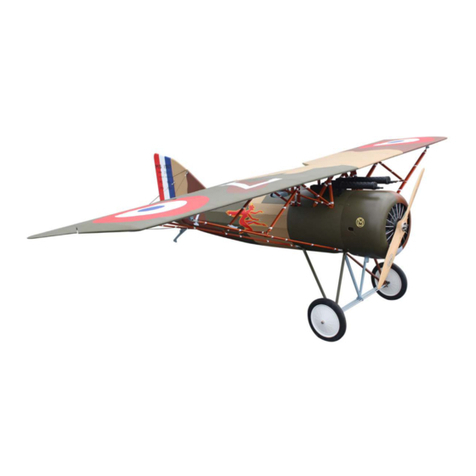
Seagull Models
Seagull Models SEA 358 Assembly manual
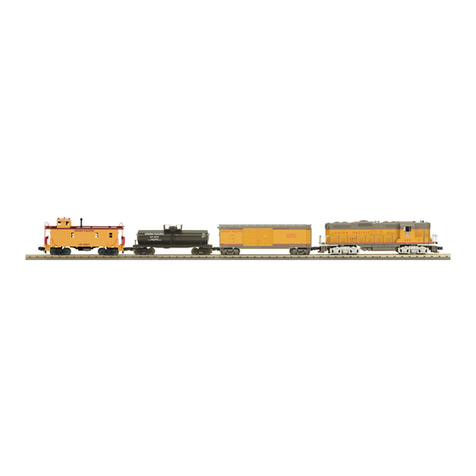
MTHTrains
MTHTrains RailKing RKS GP-7 Diesel Engine Operator's manual

GREAT PLANES
GREAT PLANES Pete'n Poke Sport 40 instruction manual
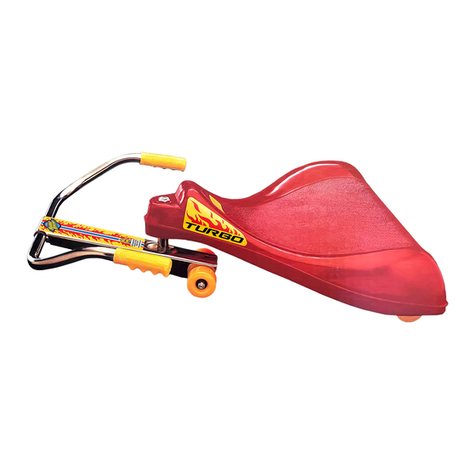
BIG TIME TOYS
BIG TIME TOYS The Original Roller Racer Flying Turtle quick start guide
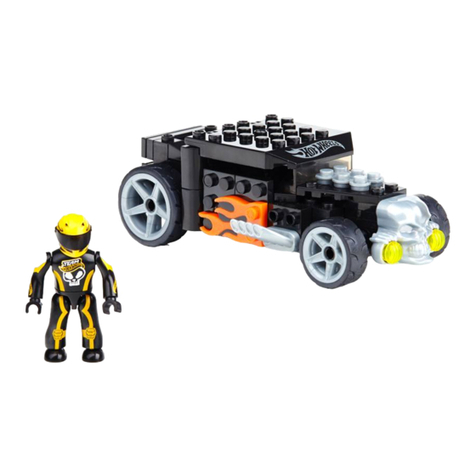
Mattel
Mattel Mega Bloks Hot Wheels Boneshaker manual
